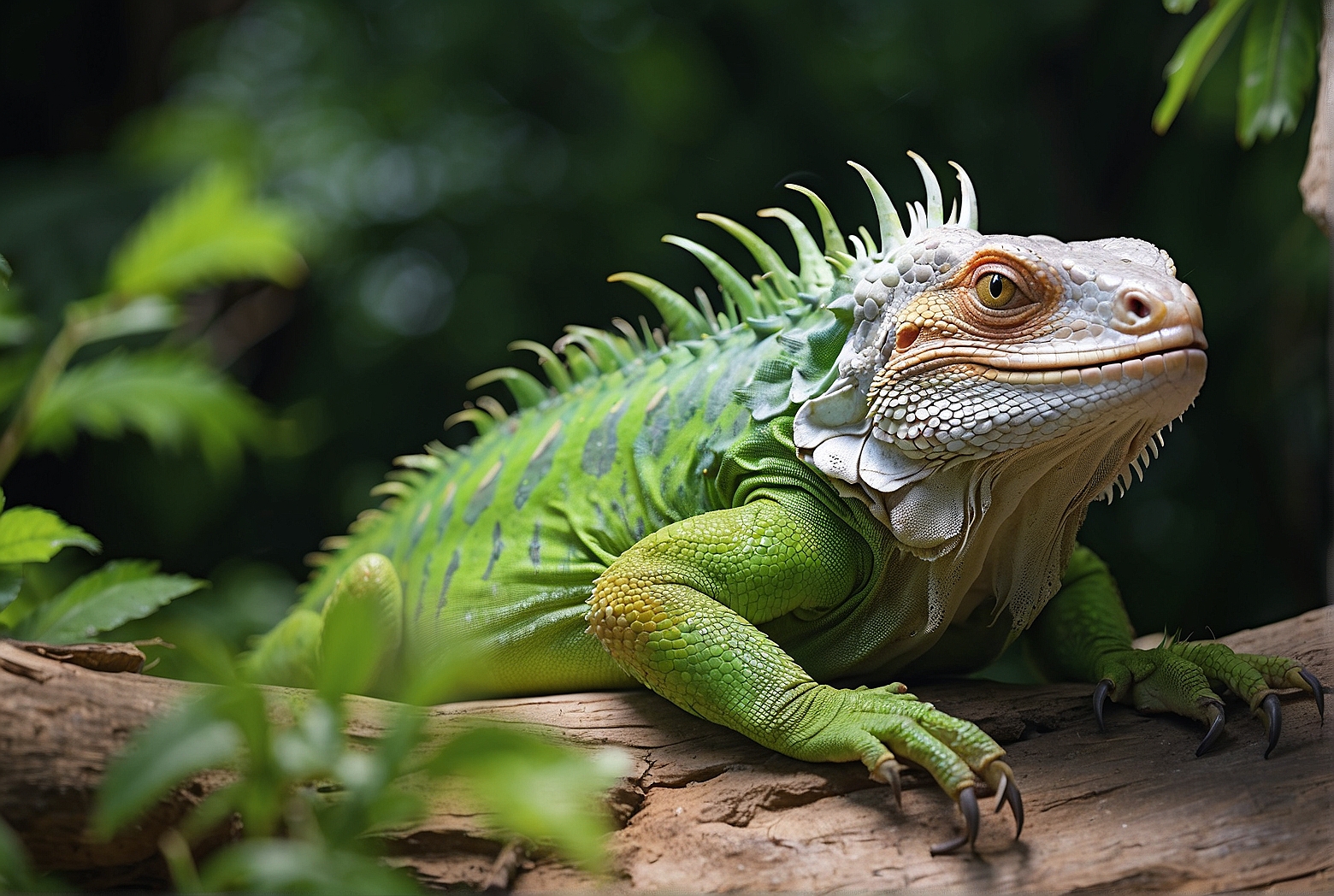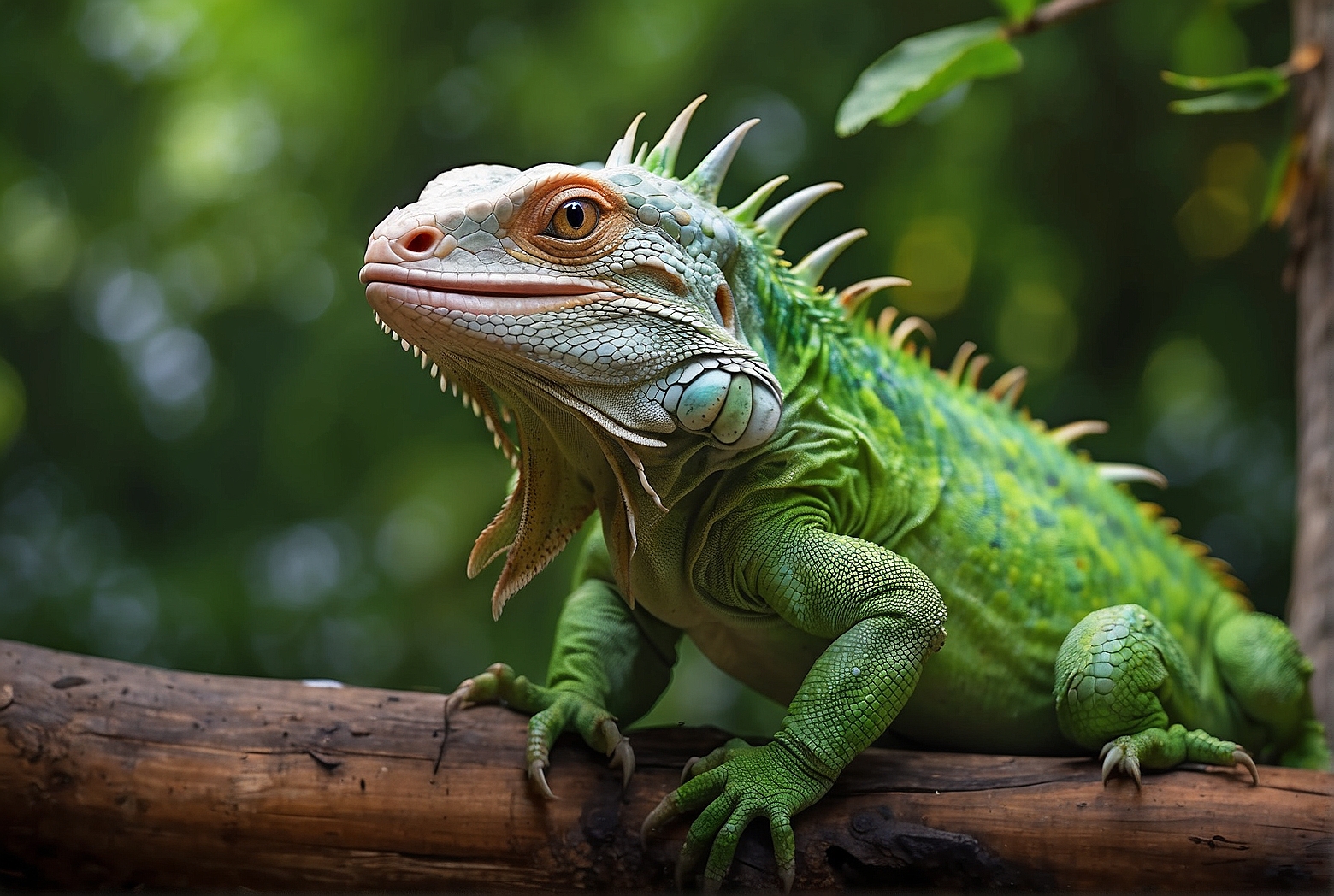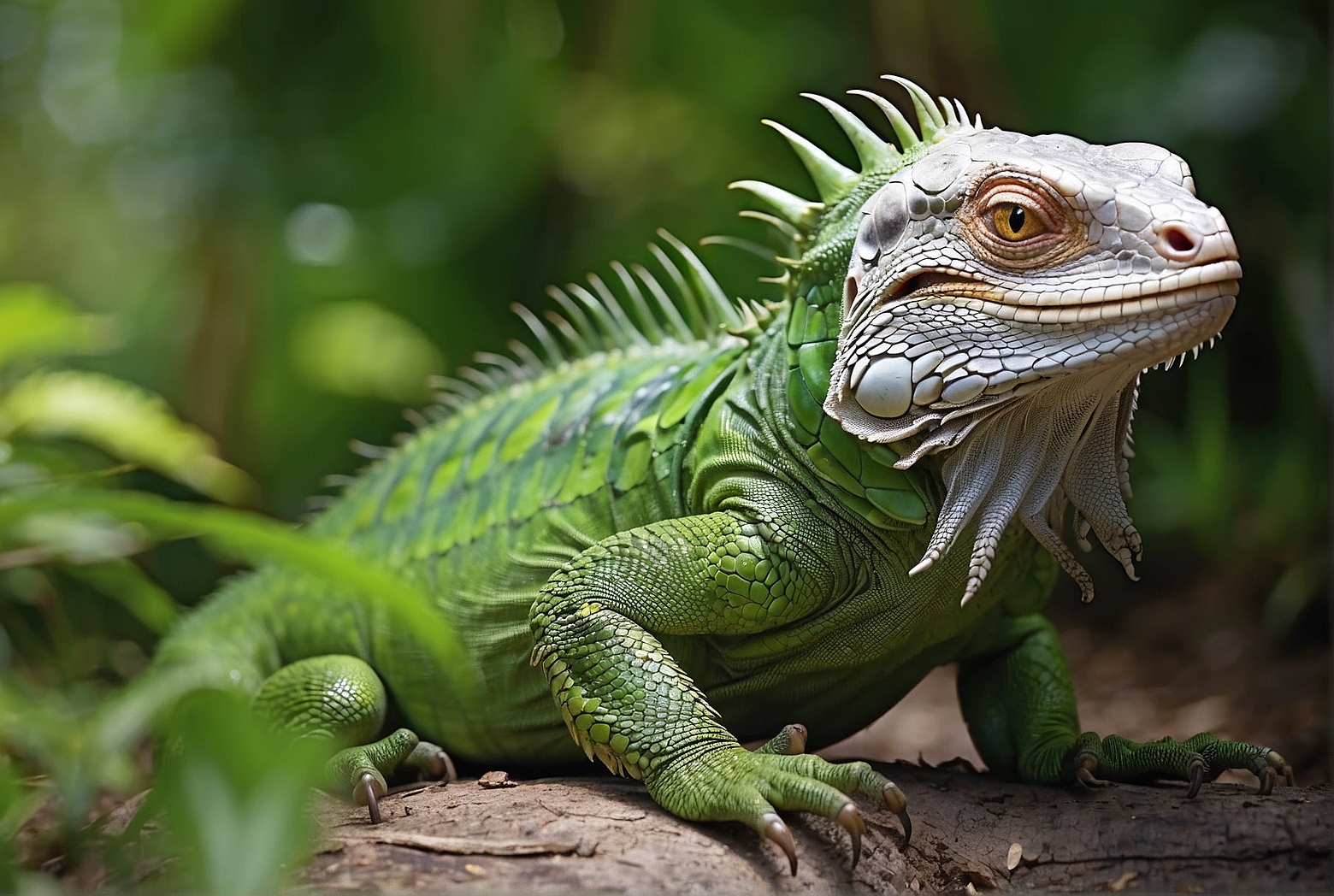Have you ever wondered about the fascinating life cycle of a green iguana? From hatching as tiny, vulnerable hatchlings to growing into majestic adults, green iguanas go through a remarkable transformation. In this article, we will explore the different stages of a green iguana’s life cycle, shedding light on the challenges they face and the incredible adaptations they develop along the way. So, get ready to embark on a journey of discovery as we unravel the secrets of this intriguing reptile’s life cycle.
Habitat
Terrestrial Habitat
As a green iguana, you primarily inhabit terrestrial habitats, such as forests, grasslands, and shrublands. These environments provide you with ample opportunities to bask in the sun, which is essential for regulating your body temperature. The trees in these habitats also offer you a safe place to retreat and find food, as they provide both shelter and a source of nourishment.
Aquatic Habitat
While you predominantly reside in terrestrial habitats, it’s worth mentioning that you also exhibit some adaptation to an aquatic lifestyle. Green iguanas are excellent swimmers and are often found near rivers, streams, and other bodies of water. You utilize these aquatic habitats mainly for drinking and cooling down in hot weather, but they aren’t your primary dwelling places.
Egg Stage
Fertilization
Fertilization in green iguanas occurs internally, which means the female retains the sperm from the male inside her body. Mating usually takes place during the mating season when males engage in colorful displays and territorial behaviors to attract females. Once a female is impregnated, she will carry the fertilized eggs inside her until they are ready to be laid.
Nesting Sites
When it’s time to lay your eggs, females search for ideal nesting sites, typically in sandy or loose soil. These sites often offer good drainage and protection from predators. Females show remarkable digging skills as they use their strong hind limbs to excavate deep burrows or pits to lay their eggs. The nesting sites are carefully chosen to provide suitable conditions for incubation.
Incubation Period
The incubation period for green iguana eggs lasts approximately 65 to 90 days, depending on various factors such as temperature and humidity. The female carefully deposits her eggs within the nesting site and covers them up, ensuring they are hidden and protected. This period is crucial for the embryos to develop and grow inside the eggs, preparing for their eventual emergence as hatchlings.

Sex Determination
Interestingly, the temperature at which the eggs are incubated plays a significant role in determining the sex of the offspring. Warmer temperatures during incubation tend to produce more females, while cooler temperatures result in more males. This temperature-dependent sex determination is a fascinating aspect of the green iguana’s life cycle and adds another layer of complexity to their reproduction.
Hatchling Stage
Emergence from Eggs
After the incubation period, the hatchlings are ready to emerge from their shells. They use a special egg tooth, located on their snout, to break through the eggshell. This process requires strength and determination, as the hatchlings must exert considerable force to free themselves. Once they have hatched, they are instinctively drawn to the surface, eager to explore their new surroundings.
Size and Features
Green iguana hatchlings are relatively small compared to their adult counterparts. They measure around 8 to 10 inches in length, with their bright green coloration already starting to show. Although they possess many of the same physical features as adults, such as strong limbs and a long tail, they still have some growing to do before reaching their full size and maturity.
Vulnerability
During the hatchling stage, green iguanas are particularly vulnerable to predation. Their small size and lack of experience make them easy targets for a wide range of predators, including snakes, birds, and mammals. To increase their chances of survival, hatchlings quickly disperse into nearby vegetation, using their excellent climbing and hiding abilities to evade potential threats.
Parental Care
While green iguanas are not known for exhibiting extensive parental care throughout their life cycle, the female does show some protection towards her hatchlings during the initial stage. After hatching, the female may remain in the vicinity of the nesting site for a short period, ensuring her offspring have a chance to find safety before she moves on. This limited care helps increase the young iguanas’ chances of survival during their vulnerable stage.
Juvenile Stage
Growth and Development
During the juvenile stage, green iguanas undergo substantial growth and development. They experience a significant increase in size as they consume a varied diet and benefit from favorable environmental conditions. A healthy diet consisting of leaves, flowers, fruits, and occasionally insects provides the necessary nutrients for growth. With each molt, the juvenile iguanas shed their outer skin, revealing a brighter and more vibrant coloration.

Diet and Feeding Habits
Juvenile green iguanas are primarily herbivorous, consuming a wide variety of plant material. Their diet consists mainly of leaves, flowers, and fruits, which provide them with essential nutrients, vitamins, and minerals. They may occasionally incorporate insects into their diet to supplement their nutrition. As juveniles, they are still developing their feeding habits and exploring different food sources to meet their dietary requirements.
Behavioral Traits
During the juvenile stage, green iguanas exhibit various behavioral traits that contribute to their overall survival and development. They display exploratory behavior, actively seeking out new food sources and safe resting spots. Juvenile iguanas are also known for their climbing abilities, utilizing their sharp claws and strong tails to move effortlessly through the trees. These behaviors help them adapt and acclimate to their environment as they continue to grow.
Adolescent Stage
Sexual Maturation
As green iguanas reach the adolescent stage, they undergo sexual maturation, marking the transition from juveniles to adults. The specific age at which this occurs varies among individuals, but it typically happens between one and two years of age. During this period, hormonal changes take place, leading to the development of physical and behavioral characteristics associated with sexual maturity.
Social Interactions
Adolescent green iguanas begin to display more social behaviors and interactions with their conspecifics during this stage. They may gather in small groups on branches or bask together in sunny areas, allowing for mutual benefits such as increased protection against predators and shared knowledge of food sources. Social interactions during this stage help shape their adult behaviors and establish hierarchies within the population.
Territoriality
The adolescent stage is also marked by the emergence of territorial behaviors in green iguanas. Males, in particular, often become territorial and establish their own areas that they defend against potential intruders. The size and quality of their territory can influence their access to resources and their success in future mating opportunities. These territorial behaviors play a crucial role in shaping the social dynamics of the population.
Adult Stage
Reproductive Maturity
Upon reaching adulthood, green iguanas are ready to reproduce and continue the cycle of life. Female iguanas become sexually receptive and are capable of producing viable eggs, while males are fully prepared to engage in reproductive behaviors. The reproductive maturity of green iguanas often occurs between three and four years of age, although individual variations can occur.
Mating Behavior
During the mating season, male green iguanas display elaborate courtship behaviors to attract females. This may involve head bobs, body displays, and bright colorations to demonstrate their fitness and dominance. Once a female is receptive, copulation takes place, typically in trees or on elevated surfaces. Mating behavior varies between individual iguanas and can be influenced by the presence of other males competing for the same female.
Longevity
Green iguanas have the potential for long lifespans when provided with optimal conditions and minimal threats. In the wild, they can live for about 10 to 15 years, but in captivity, where they are protected from natural predators and have access to proper nutrition and medical care, their lifespan can extend to over 20 years or more. How long an individual lives depends on various factors, including genetics, habitat quality, and human intervention.
Mating Season
Reproduction and Courtship Rituals
The mating season is a crucial period for green iguanas, as it allows them to reproduce and ensure the survival of their species. During this time, the males engage in courtship rituals to attract the attention of receptive females. These rituals often involve visual displays, head-bobbing, and territorial behaviors intended to signal their readiness to mate and establish dominance within the population.
Nesting Behavior
As the mating season progresses, females begin seeking suitable nesting sites to lay their eggs. They actively search for areas with ideal soil conditions, adequate drainage, and protection from predators. Once a suitable site is located, the female starts digging a burrow or pit to deposit her eggs. This nesting behavior is critical in providing a safe and favorable environment for the development and hatching of the offspring.
Egg-laying Season
Building Nesting Sites
During the egg-laying season, female green iguanas invest a significant amount of effort in building nesting sites. They use their powerful hind limbs to excavate deep burrows or pits in the ground, carefully constructing a suitable environment for their eggs. These nesting sites provide essential protection and ensure the eggs have the necessary conditions for successful incubation and later hatching.
Egg Laying
Once the nest is prepared, the female green iguana proceeds to lay her eggs. This process involves carefully depositing each egg within the nest while ensuring they are appropriately spaced and positioned to allow for proper ventilation and incubation. Depending on the female’s size and health, she can lay a clutch of anywhere between 10 to 50 eggs in a single breeding season.
Nest Guarding
After the eggs have been laid, the female remains near the nesting site to guard and protect her clutch. Although the level of parental care in green iguanas is generally limited, the female will display some protective behaviors during this time. She may defend the nest against potential threats, such as predators or disturbances, ensuring the best chance of survival for her offspring.
Parental Care
Incubation Period
During the incubation period, parental care is primarily focused on maintaining suitable conditions for the eggs to develop and hatch successfully. The female green iguana does not physically incubate the eggs but rather ensures they are adequately covered and protected within the nest. This period can range from 65 to 90 days, depending on factors such as temperature and humidity, which directly affect the development of the embryos.
Protection of Hatchlings
Once the hatchlings begin to emerge from their eggs, parental care revolves around protecting them during their vulnerable stage. While green iguanas are not known for extensive parental care, the female may remain in the vicinity of the nesting site for a short period, ensuring her hatchlings have a chance to disperse and find safety. This brief protection increases their chances of survival during this critical transition phase.
Life Expectancy
Environmental Factors
Several environmental factors influence the life expectancy of green iguanas. Availability of suitable habitat, including food sources and shelter, directly affects their chances of survival. Climate conditions, such as temperature and humidity, also play a significant role in their overall health and well-being. Adequate access to sunlight for basking and thermoregulation is another crucial aspect for their longevity.
Predators
Green iguanas face various predators throughout their life cycle, which can impact their life expectancy. Hatchlings, in particular, are more susceptible to predation due to their size and lack of experience. Snakes, birds of prey, mammals, and even other reptiles may pose threats to green iguanas. However, as they grow larger and stronger, their ability to defend against potential predators improves, contributing to their longer life expectancy.
Human Impact
Human impact, both direct and indirect, can greatly influence the life expectancy of green iguanas. Habitat destruction, whether through deforestation or urban development, reduces their available resources and increases the risk of population decline. Pollution, poaching, and illegal pet trade also pose significant threats to their survival. Conservation efforts and responsible human behavior play a crucial role in ensuring the longevity of these remarkable reptiles.
In conclusion, understanding the life cycle of a green iguana provides valuable insights into their fascinating journey from egg to adulthood. From their habitat choices and nesting behaviors to their growth, reproduction, and interactions with their environment, every stage of their life cycle contributes to their survival and perpetuation as a species. By appreciating the intricacies of their life cycle, we can better appreciate and protect these remarkable reptiles for generations to come.
